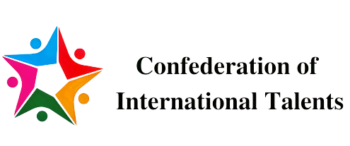Common Mistakes to Avoid When Implementing OHS Training Programs
Implementing effective occupational health and safety (OHS) training programs is crucial for making a safe and healthy work environment. However, organizations often encounter challenges and make common mistakes when developing and implementing these programs. To avoid common mistakes, we will explore the common pitfalls to avoid when implementing OHS training programs and provide recommendations to rectify these mistakes, thus ensuring compliance with regulations and the overall success of your training initiatives.

Why is OHS Training Important?
OHS training is vital for promoting workplace safety, reducing accidents, and protecting employees’ health and wellbeing. It helps employees understand their responsibilities, identify hazards, and develop the necessary skills to prevent accidents and handle emergencies. Effective OHS training programs contribute to improved compliance with regulations, increased employee engagement, and a culture of safety within the organization.
Mistake #1: Insufficient Needs Assessment
Before developing an OHS training program, failing to conduct a thorough needs assessment can result in ineffective training initiatives that do not address the specific hazards and challenges in your workplace. To avoid this mistake:
- Conduct a detailed hazard assessment to identify the specific risks in your workplace.
- Regularly update the assessment to adapt to changes in equipment, processes, or regulations.
- Involve employees in the needs assessment process to gain valuable input and ensure the program caters to their specific needs.
Mistake #2: Lack of Clear Communication
Poor communication is also one of the significant obstacles in OHS training programs. When expectations, procedures, and safety information are unclear, employees may not fully understand how to implement safety measures. To prevent this:
- Clearly communicate program objectives, expectations, and responsibilities to all employees.
- Use simple and jargon-free language in training materials to ensure understanding.
- Encourage two-way communication channels to address questions and concerns.
Mistake #3: Inadequate Training Material Development
Developing training materials that are either too generic or too complex can hinder the effectiveness of OHS programs. Consider the following:
- Personalized training materials to suit the specific needs and roles of your employees.
- Utilize a variety of training methods, such as videos, interactive activities, and real-life scenarios, to engage participants.
- Include practical, hands-on exercises to reinforce learning and promote skill development.
Mistake #4: Neglecting Follow-Up and Evaluation
Failing to follow up and evaluate the effectiveness of training can lead to a lack of continuous improvement and missed opportunities for enhancing OHS programs. To avoid this oversight:
- Establish a system to monitor whether employees have retained and implemented the training content correctly.
- Encourage employees to provide feedback on the training program’s relevance, practicality, and usefulness.
- Regularly review and update training materials and methods based on evaluation results.
Mistake #5: Noncompliance with Regulations
Disregarding regulations and failing to align OHS training programs with legal requirements can result in serious consequences. To ensure compliance:
- Familiarize yourself with applicable OHS regulations and standards.
- Integrate relevant legal requirements into the training material and curriculum.
- Regularly review and update the training program to reflect changes in regulations.
What to Do If These Mistakes Happen?
If any of these mistakes have already occurred in your OHS training program implementation, don’t panic. Here’s what you can do to rectify them:
- Conduct a thorough review of your existing program and address the specific areas of concern identified by the mistakes.
- Engage with employees and stakeholders to gather feedback and input on necessary improvements.
- Revise and refine the training materials by incorporating the recommendations mentioned earlier.
- Reinstate and reinforce the importance of OHS training and compliance within the organization.
Conclusion
Avoiding common mistakes when implementing OHS training programs is crucial for creating a safe work environment and promoting a culture of safety. By conducting needs assessments, improving communication, developing effective training materials, following up and evaluating, and ensuring compliance with regulations, organizations can improve OHS programs’ effectiveness and protect the well-being of their employees.
Remember, continuous improvement is key. Keep learning and evolving your training programs to adapt to changing circumstances, emerging risks, and new regulations. Prioritize Health and Safety at the workplace with the Confederation of International Talents providing top-class training in Occupational Health and Safety.
